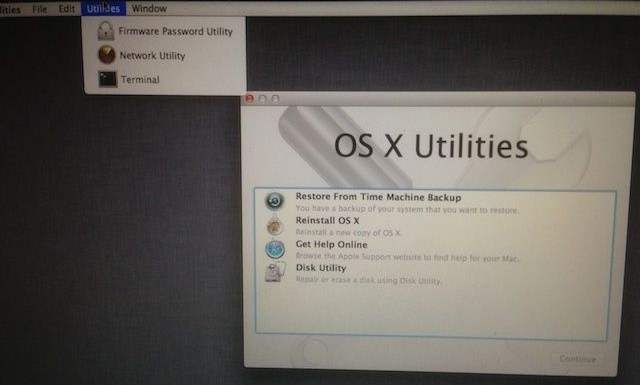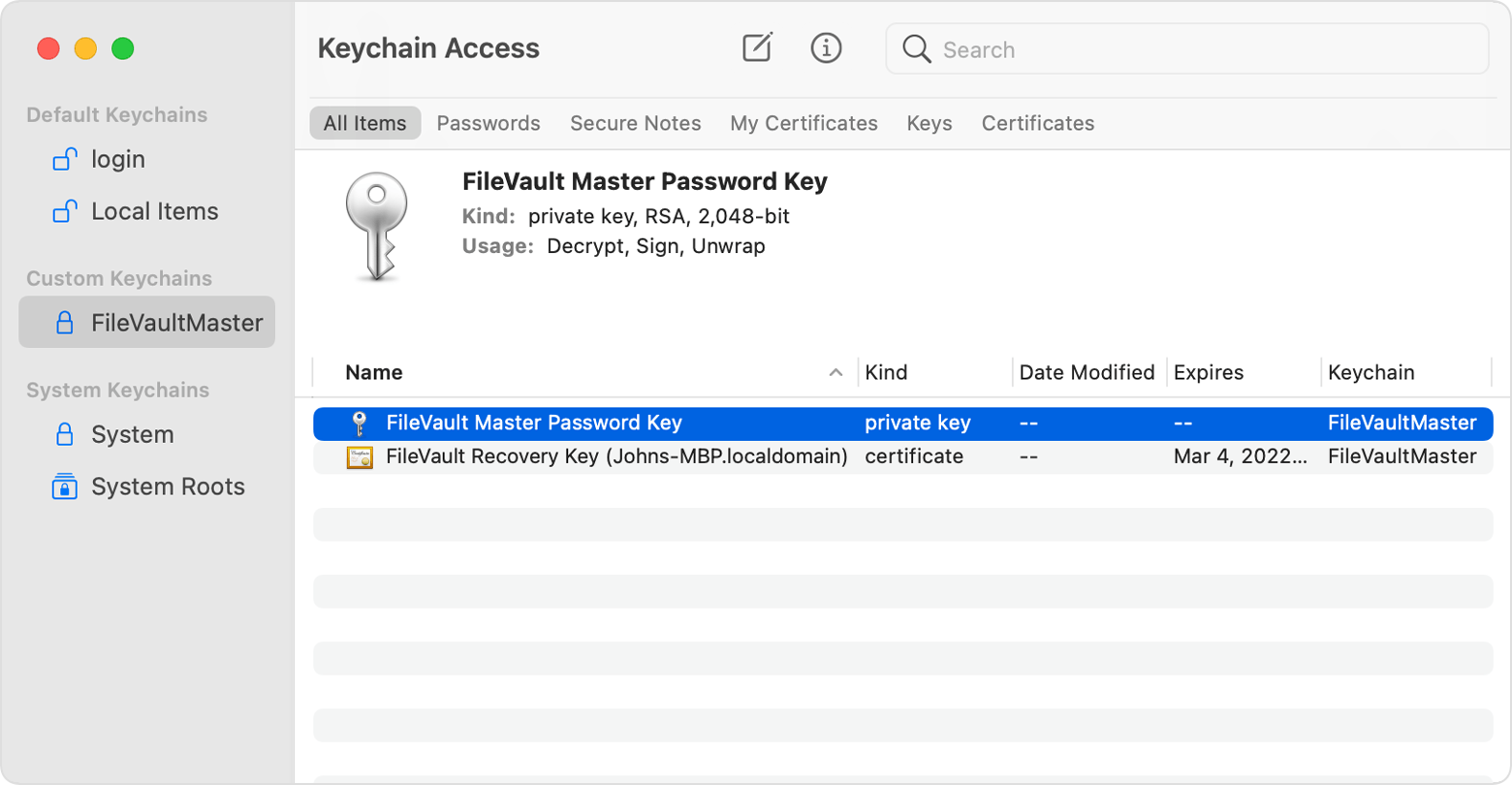


Most end users never truly understood that backups were not the be-all end-all of keeping your data protected. I was an IT and security administrator for many years.
#FILEVAULT MASTER PASSWORD RESET MAC#
Also, if you believe that encrypting and decrypting data on the fly on your Mac may prove to resource intensive, you might want to forego enabling FileVault until such time that your system specs can run FileVault with out a noticeable hit. Some non-power users simply store photos, music, or videos on their Macs and as such, the stress of not being able to recover your data due to a misplaced Recovery Key or a forgotten iCloud account name or password might outweigh the security aspect. If you're the type of person that is less concerned with securing your data, but is more concerned with being able to restore lost data easily, then enabling FileVault might not be for you. However, this is inherently less secure in that you're placing your trust in Apple to make certain no one gets access to that cipher online. If you by chance use the iCloud option as a cipher for your encryption, then you'll have some help from apple in terms of requesting a password reset. You are solely responsible for safeguarding your Recovery Key and making it available for restoration purposes. Apple does not have a backdoor or secret way to unlock your data. If you lose or misplace your Recovery Key, and you need to restore your data from backup or to another Mac due to hard drive failure, your data is gone forever. Second, and we've made reference to this earlier, your Recovery Key must never be stored on the local disk exclusively. As a result, my battery life is also affected. However, some older macs like my 2010 MacBook Air, has noticeable hiccups when opening and closing programs and files. Mind you, todays, Macs are very powerful and the processor usage is negligible when encrypting and decrypting data on the fly.

There are some caveats when it comes to enabling FileVault.įirst, encryption does take a toll on system resources. Swapping your hard disk into another PC, Mac or linux computer allows for direct data access if the contents are not encrypted. Just having a strong password is not enough if you've physically lost your device. Perhaps you often travel with your MacBook and have personal information on it such as credit cards or bank information. If you have sensitive information on your Mac, such as patient information, industrial blueprints, or intellectual property you might want to consider using FileVault to encrypt your data. The iCloud account is less secure in the sense that your iCloud cipher is stored online and at least part of the cipher information is visible for all to see (i.e. It is imperative that your Recovery Key be stored in a safe, non-local location such as a safe, safety box or cloud storage location such as 1password or iCloud. The Recovery Key is the cipher that can be used to decrypt all of your data whether it be on your computer or if you put your hard drive in a new Mac. or to be able to use your iCloud account as a cipher. How does FileVault workĮnabling FileVault will prompt you for a password and you'll then have a choice to create a Recovery Key. It forces all uses to have to re-enter their password when waking from sleep or a screensaver and any non administrator accounts will require an administrator to log them in on first login to enable the encryption. It will encrypt all of your data on your startup disk (although you can also encrypt your Time Machine backups as well) and once enabled, it will encrypt your data on the fly and will work seamlessly in the background. FileVault is Apple's implementation of encrypting your data on macOS and Mac hardware.


 0 kommentar(er)
0 kommentar(er)
